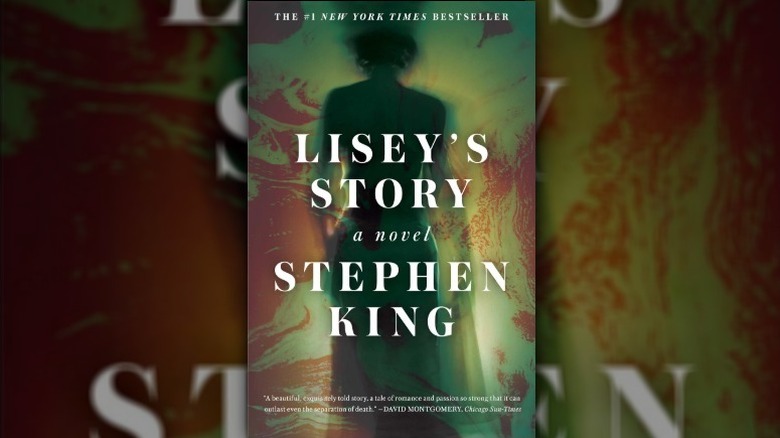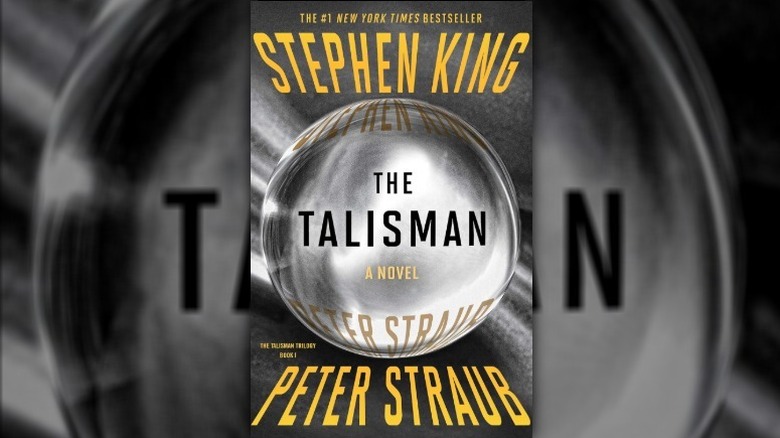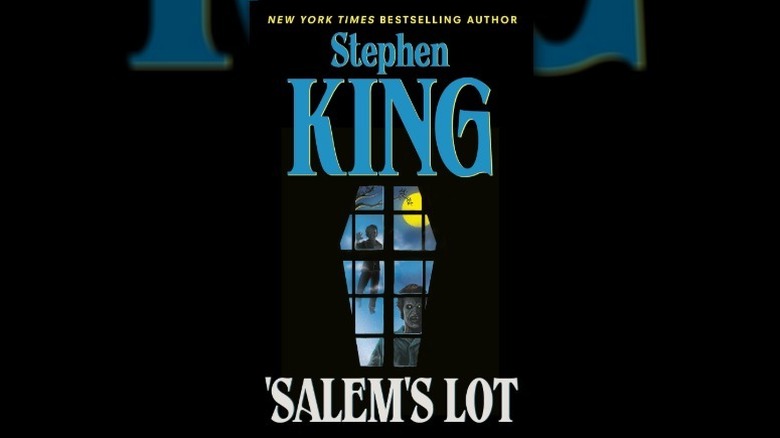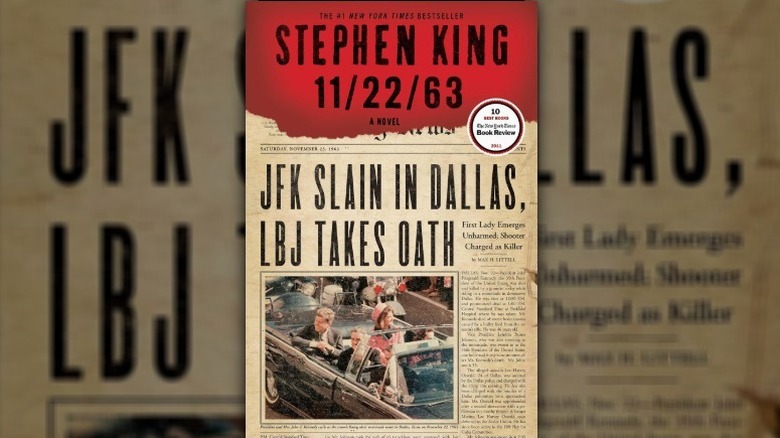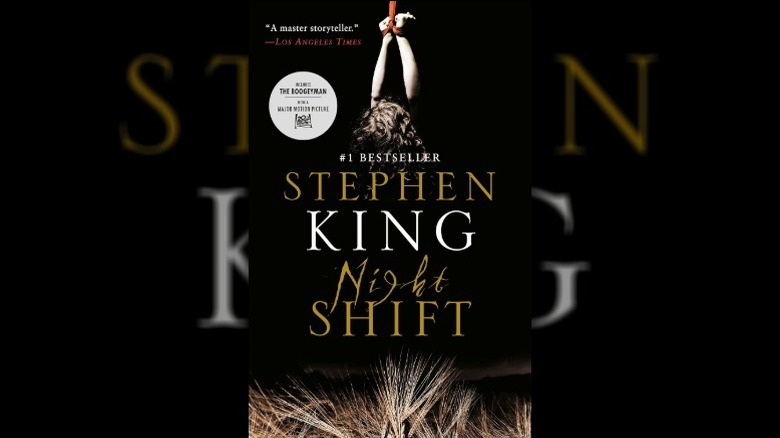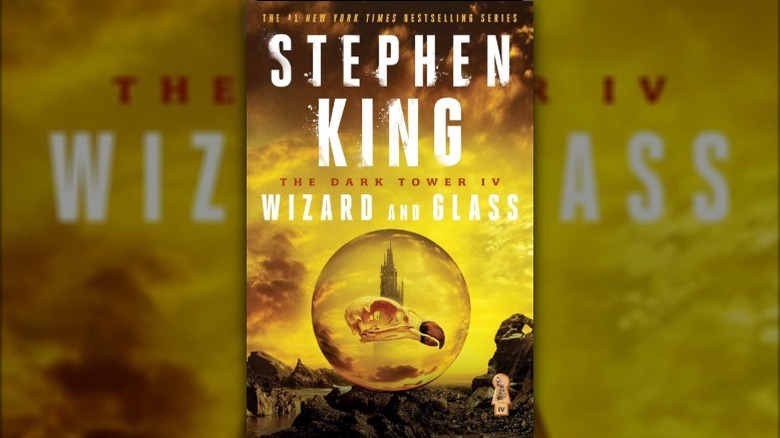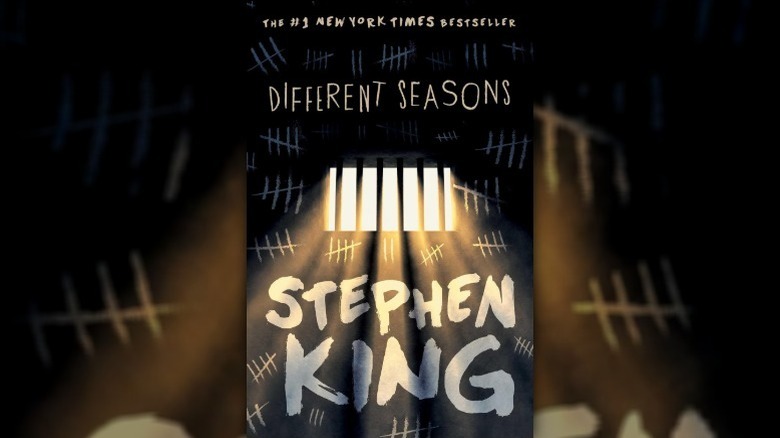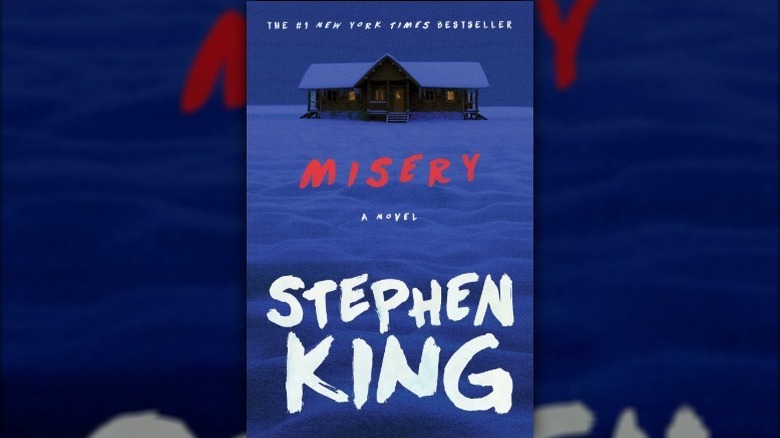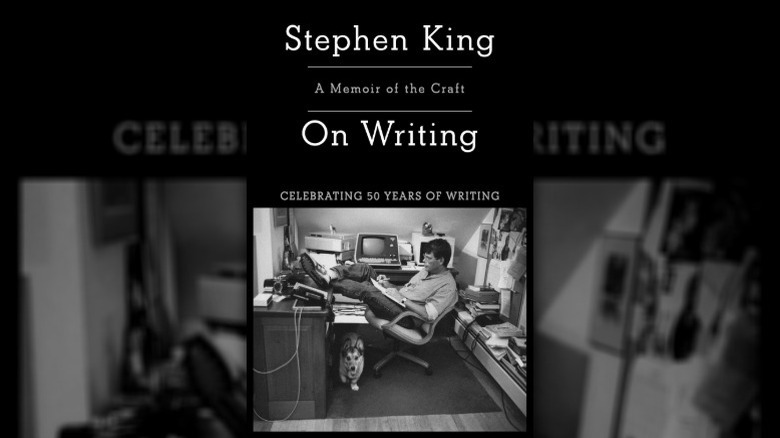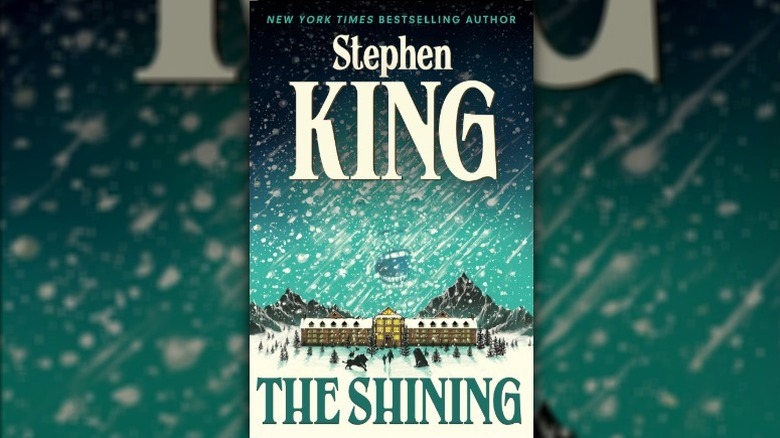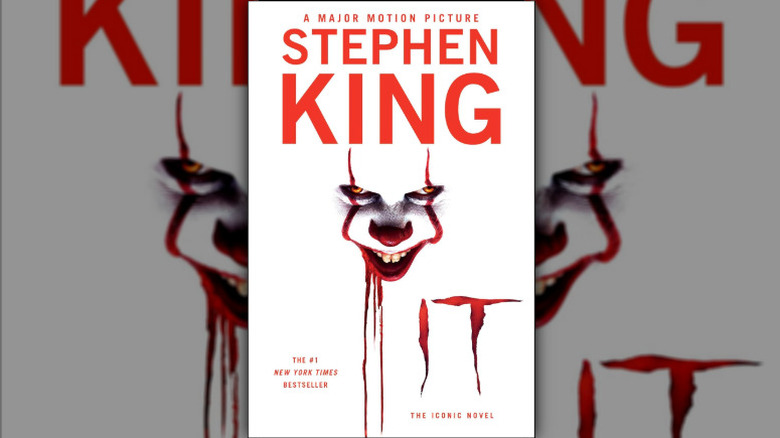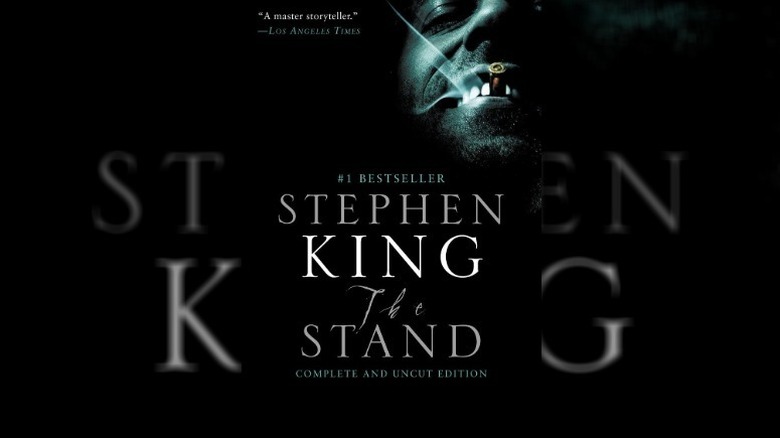The 12 Best Stephen King Books, Ranked
In a career spanning more than five decades and dozens of book-length releases, Stephen King has cemented himself as not just the most celebrated horror author of his time, but one of the great American writers ever. Beginning with the publication of his debut novel "Carrie," King has churned out story after story chronicling American terrors both small and large, alongside thoughtful dramas, mysteries, fantasy, science fiction, and more.
Over the course of his career, with the help of numerous film adaptations of his work, King has built a loyal following of fans who all have their own opinions regarding what constitutes the very best of his output. Some prefer the earlier, more horror-driven stuff, while others are drawn to the latter-day genre blenders or the epic delights of his "Dark Tower" saga. Whatever your favorites, though, some books have emerged as clear contenders for the title of best Stephen King release ever, and those are the ones we're here to talk about.
12. Lisey's Story
One of King's most personal novels is also one of his most emotionally moving and beautifully written. Released in 2006, "Lisey's Story" was written in the aftermath of the 1999 car accident that nearly took King's life, and tells the story of Lisey Landon, a writer's widow who has to go through her husband's voluminous office full of memories and unpublished work.
Along the way, Lisey encounters a deranged fan and a persistent academic who are trying to latch on to her husband's unpublished manuscripts, and discovers that the stories her beloved used to tell about a mystical other realm called Booya Moon are actually much more than stories. As much a tribute to King's wife, Tabitha, as it is a story about his own mortality, "Lisey's Story" shows us King at his most emotionally raw and fantastically strange, as he explores not just death and grief, but the other worlds writers make for themselves, and how those worlds can often save them. It doesn't have the same following as other books on this list, but it's too beautiful not to include.
11. The Talisman
The first of two collaborations between King and his fellow horror author Peter Straub, "The Talisman" is both a solid horror novel and a sweeping epic fantasy, about a boy named Jack who journeys to another realm in an effort to save his dying mother.
One of the few King books that hasn't yet been adapted to film (though the Duffer Brothers are working on it), "The Talisman" chronicles Jack Sawyer, a boy whose movie star mother has fallen ill, and his discovery that he's able to travel to another, stranger version of America called "The Territories." Structured with the pacing and scope of a classic adventure novel, but filled with moments of terror including monsters and pure human evil, it's a book that serves as a great entry point for younger readers looking to get into King, and works a near-seamless blending of his style with Straub's. It doesn't retain the same emotional punch of books higher on this list, but its sheer entertainment value is enough to endear itself to King fans. Plus, if you like it, you can immediately pick up the sequel, the darker and more mature "Black House," published decades after "The Talisman."
10. Salem's Lot
King's second novel, like many of his early horror hits, begins with a simple "What if?" question which the author then narratively explores. In this case, the question is "What if a Dracula-like vampire set his sights on a small New England town?" It's a simple twist on a classic subgenre, but "Salem's Lot" works because of what King is able to build within that twist. Over the first half of the book, he convincingly builds out of a cast of characters in the titular town, led by novelist Ben Mears, and laces the story with local legends and fears which all seem to be coming to fruition with the arrival of a pair of mysterious antique dealers.
What happens next is one of the bloodiest and most frightening payoffs in all of King's fiction, as the town falls prey to vampiric forces and starts to collapse. It's a book that's been imitated many times since, and has been adapted for film and TV multiple times, but King's prose still retains a kind of primal awe as the vampires close in. For all its adaptations, it's still great on the page, and decades later it's one of the best things King's ever written.
9. 11/22/63
King has proven time and time again that his gifts extend well beyond the horror genre, and "11/22/63" might be the single most ambitious piece of evidence he's produced in that regard. Named for the date of John F. Kennedy's assassination, the novel follows a Maine school teacher (one of King's jobs before he became a full-time writer) who's introduced to a portal through time that will take him back to 1958.
His mission, bestowed on him by an older friend, is to go back to 1958, stay there, and somehow prevent Lee Harvey Oswald from killing JFK. What follows is a five-year journey of suspense, romance, and surprising emotional depth, as King journeys deep into the circumstances surrounding one of the most consequential events of 20th-century America. Can saving Kennedy really change anything? Did Oswald act alone? How do these events converge, and what do they say about our American present? These are all questions King attempts to answer and explore in this mammoth novel, and because he's able to make good on the book's ambitious premise, it remains one of his greatest achievements.
8. Night Shift
King's first story collection is still a favorite among his fans, in part because reading it allows you to sample from a wide array of horror subgenres and get an overall taste for what King is about as a creator. Featuring a variety of stories largely collected from his pre-novelist days of writing fiction for men's magazines, "Night Shift" contains many of the author's most beloved bits of short fiction, most of which have been adapted for film and TV.
Which stories are we talking about? Well, "Night Shift" is the book that first introduced many fans to "Children of the Corn," "The Mangler," "Graveyard Shift," "Trucks" (which later became King's only directorial effort, "Maximum Overdrive"), "The Lawnmower Man," and "The Boogeyman," to name just a few. But while those are the most well-known stories in the book, they're far from the only gems. "I Am The Doorway" is a wonderful sci-fi horror story, while "Quitters Inc." is a masterclass in suspense, "Strawberry Spring" draws from true crime fixations, and "The Ledge" is one of King's great crime thrillers. It all adds up to a collection that's full of tremendously entertaining moments that show the breadth of King's talent even early in his career. It's not his best collection ever (more on that shortly), but it is a landmark release.
7. The Dark Tower IV: Wizard and Glass
Stephen King's epic eight-book (so far, at least) fantasy saga, "The Dark Tower," is beloved among the King faithful, but it's also so specific and strange that it's attracted a whole different subset of fans unto itself. That means there's a lot of debate over which "Dark Tower" book is the best, and while they're all great, we have to go with "Wizard and Glass." A prequel to the main series set before the first three books, the novel follows a younger version of King's gunslinger, Roland Deschain, as he travels out to a bucolic corner of his father's kingdom and falls in love with a beautiful girl there.
Unfortunately for Roland, the romance is not meant to be. The stars are aligned against them, but Roland, his best friends, and his new lover Susan are still determined to fight, facing corrupt local officials, a sly wise woman, and deadly rogue gunslingers along the way. It's the book that goes a long way to explaining why Roland is the way he is in the main "Dark Tower" story, and a gorgeously rendered Western fantasy by King. Though it keeps the same setting as the other books in the saga, it's a pause in the main action to offer something entirely different in tone and narrative, and that makes it both beloved and refreshing for "Dark Tower" readers.
6. Different Seasons
In 1982, King released his second collection with "Different Seasons," made up of four novellas that memorably allowed him to break from pure horror storytelling with tales of suspense, drama, and genuine emotional power. It was, and remains, a rousing success.
For proof, you need only look at the film adaptations which were spawned by the release, two of which are now considered among the best Stephen King movies ever made. The novella "The Body" was adapted by Rob Reiner into the coming-of-age classic "Stand By Me," while "Rita Hayworth and Shawshank Redemption" became Frank Darabont's "The Shawshank Redemption." Both rank not just as great King movies, but among the greatest films in their respective decades.
But the boyhood adventure of "The Body" and the emotional prison break of "Shawshank" aren't the only delights lurking in "Different Seasons." The second novella in the collection, "Apt Pupil," is a chilling suspense tale about one young man's growing fascinating with the Nazi-in-hiding who lives in his neighborhood, while "The Breathing Method" is a nested narrative which holds the purest horrors of the book, as a doctor recounts the story of a pregnant woman and a terrible accident. Together they form a remarkable cross-section of King's storytelling interests and instincts that still holds up to this day.
5. Misery
In his book "On Writing," King recalls that the story which became "Misery" emerged during a dream, and originally presented itself as a piece of short fiction that would see writer Paul Sheldon die horribly at the hands of his superfan, Annie Wilkes.
What happened next, of course, is that the story took off in King's hands, Paul Sheldon kept fighting for his life, and Anne Wilkes expanded her influence to become one of the greatest villains in King's entire body of work. The story takes place largely in one location, and the setup is extremely simple, but it's what King does within that space that makes "Misery" shine, and it all starts with character.
King's short fiction prepared him for a story like this, in which he has to quickly and efficiently establish the opposing forces that are Paul and Annie, place them in an impossible scenario, and then knock them into each other. It's a dynamite concept for a book, but "Misery" succeeds beyond its essential hook because we come to understand these two people very quickly, and that means the sequences in which Paul fights to rid himself of Annie are imbued with suspense so powerful that the reader almost can't stand it. It's an addictive work, and as a pure exercise in thriller writing, it's arguably the best King's ever done.
4. On Writing: A Memoir of the Craft
King has occasionally ventured into nonfiction, including his "Danse Macabre" treatise on the state of horror in the 1980s and "Faithful," his book on the Boston Red Sox co-written with Stewart O'Nan. Then there's "On Writing," an essential piece of work from one of the masters of modern fiction that's so powerful and helpful even non-King fans keep turning to it for creative advice.
Written partially before and partially after King's 1999 auto accident, "On Writing" is divided into several key sections. "C.V." is a mini-memoir, discussing not just the untold truth of King's life in general, but the specific instances in his childhood, early adulthood, and early career which made him into the writer he would become. "Toolbox" is basically a basic craft guide, breaking down all the things a good writer needs to master in order to create good prose. Then there's "On Writing," the final and meatiest section of the book, which sees King breaking down good fiction writing as he sees it, using examples from his own life and work in the process. Along the way, readers get introductions to some of King's most powerful ideas, studies of the work of other writers, and even a writing exercise that can help them to master the skills King views as essential. It's a slim book, but it still ranks among King's most influential pieces of writing. If you want to understand how writing works and what it can do for you, this book is a must-read.
3. The Shining
King's third novel remains among the most influential horror stories of the last 50 years, and it all begins with a very relatable family and some details pulled from King's own life.
Set at a Colorado hotel that's closing for the winter, "The Shining" follows the Torrance family as patriarch Jack takes a job as the hotel's caretaker, and brings his wife Wendy and son Danny along for the ride. The hook? Well, the hotel is haunted, and Danny has the mysterious ability to see and communicate with ghosts. That's a scary setup all by itself, but when something starts happening to Jack, eating at his own alcoholic urges and threatening his sanity, Danny and Wendy suddenly face an all-too-familiar evil.
King wrote the novel before he got sober, but it's easy to see how his own issues with drinking influenced Jack, his temper, and the way that temptation starts to eat at him as the Overlook Hotel's dark spell closes in. The way this manifests in Stanley Kubrick's film adaptation is not in line with King's own views on the story, but the sheer force of the primal fears in "The Shining" made it an instant classic both on the page and on the screen. The divided response to the movie led King to later write both his own TV adaptation and a sequel, "Doctor Sleep." In terms of pure scares per minute, this might be the most frightening book King has ever published.
2. IT
King's most epic pure horror novel, weighing in at more than 900 pages, "IT" was the author's effort to create some kind of ultimate monster, a being that could become the wildest fears of its prey. In the process, King created arguably his greatest villain, and a story so compelling it's now been a defining moment in horror for multiple generations.
Set across decades and following a group of friends from the Maine town of Derry, "IT" chronicles the struggle against Pennywise, a being of cosmic power who dwells beneath Derry and most often takes the form of a demented clown, terrorizing children and adults alike on a feeding cycle that sees him emerge roughly every 30 years. In the 1950s, Bill Denborough and his group of friends dubbed "The Losers Club" manage to defeat Pennywise, only to find that the being has risen again in the 1980s, ready to feed again and seek revenge on the people who very nearly destroyed it the first time.
"IT" has everything King fans could want from a novel of this size and epic scope. Its horror sequences, covering everything from ghostly little boys to creepy clowns to all-out encounters with monsters, are graphic and intensely disturbing. Its portrait of Derry is as chilling as it is complex, and its characters are remarkable humans who all evolve in believable, memorable ways. It might not be the best King novel, but in terms of the best horror novel in the writer's canon, it's hard to beat.
1. The Stand
If there's one book that can sum up everything King is capable of doing — great worldbuilding, great character work, frightening sequences, and epic fantastical landscapes — in the course of a single story, then it's "The Stand." Originally published in 1978, the novel chronicles an epic struggle for good and evil across an America devastated by a hyper-deadly superflu, and the various survivors who choose sides in a struggle for humanity's soul.
So, what makes "The Stand" King's best novel? Well, its premise is not just horrifically realistic in many respects, but a chance for King's imagination to run wild in a version of the United States that's lost all authority, reason, and hope. As he sketches out characters ranging from a blue collar Texan to a pregnant teen from Maine to a mysterious drifter who just might be evil incarnate, he also delivers an unforgettable, violent, stunning vision of an America gone to ruin. When the central struggle begins, we've already been deeply immersed in an amazing world, and things only get more intense as the more fantastical elements of the story kick in.
Part horror novel, part epic fantasy, entirely King's own in both style and substance, "The Stand" proved so popular in its original film that in 1990 it was re-released in an even longer "Complete and Uncut Edition," giving fans a chance to dive deeper into a book that's still King's crowning achievement.

